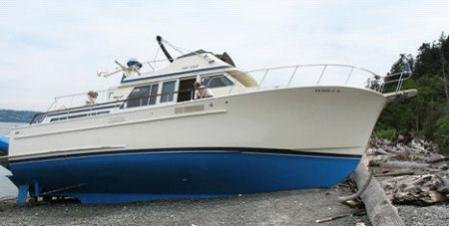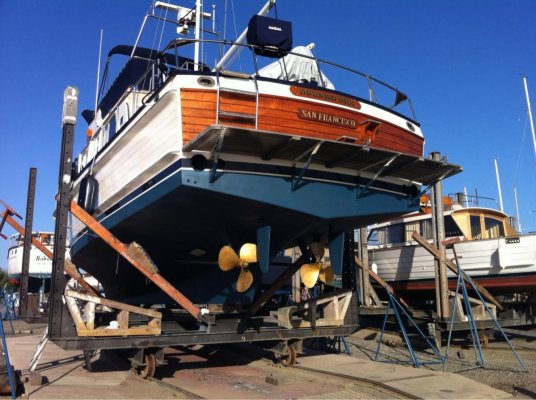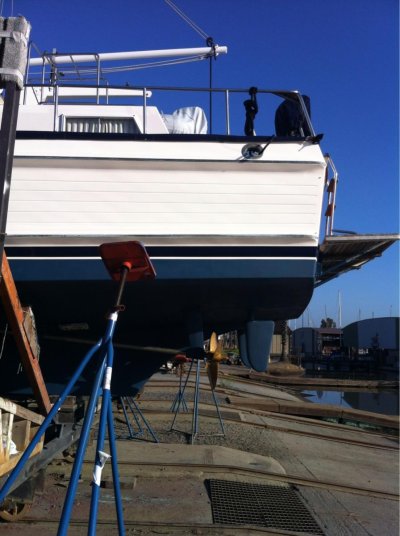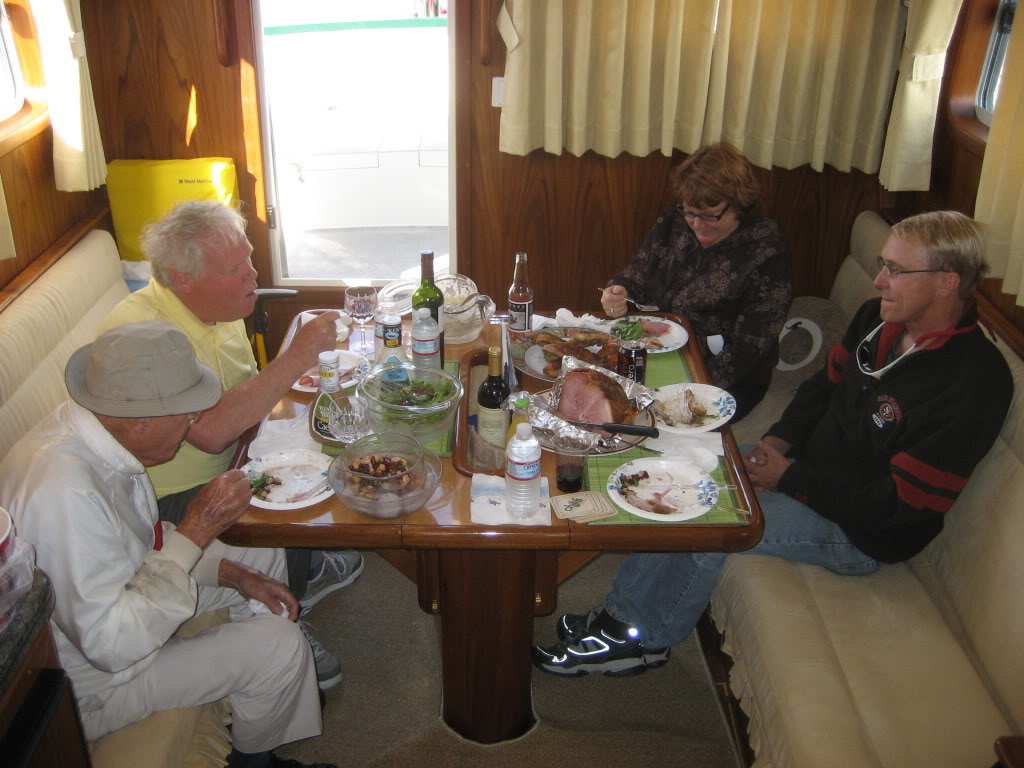Chip--- What did you have before you got the Sundowner Tug?
Marin - The last boat we had was a S-2 9.2C sailboat.
We started out looking for something in the 40 for range. Motorsailer or trawler type. Kids are grown so it's just the wife and I. We don't do social very well. Especially on a boat. Both of us have had enough people interaction in our professional lives.
First saw my first Sundowner Tug in Anacortes and tried to buy it as we felt it had enough room in it to do everything we needed.
Finally found one on the Ohio River. Bought it and brought it home. The rest is history.
I have spent lots of time on both sail and power boats in the 40 -50 foot range. Singles and twins, fast and slow. Speed is not an issue. I'm a sailor at heart. Julie is into slow too.
Scout has a single Kubota engine (500 hrs) that cruises at 6.7 knots @ 2000 and burns about a gallon of fuel an hour. I have not had issues handling the boat with a single engine either with my wife or single hand. It has a low profile with a 10 foot air draft. Water draft is less than 3 feet.
Head, sanitary lines, Electra Scan all new. All thru-hulls and seacocks new. Electrical new. Auto pilot new. Refrigerator and freezer new. Drive line bearings, cutlass bearings and flex stern tube new. Rudder bearing and packing assembly new, GPS/radar new, genset 3 hrs almost new, windows new, 3000 watt true-sine inverter new, bottom stripped to glass and epoxy coated, AC/Heatpump...you get the picture.
We now have a very comfortable (for two people) 30 foot boat with a 12 foot beam. It can be moved by trailer w/o removing any 'body parts' under a wide load permit. It does not have a separate shower which I would have preferred but we did add a cockpit shower that works great. We have no intention of selling out and being liveaboards but the loop is in our future. A few weeks on the boat and a few weeks at home.
We have only had Scout in the water for a couple of months but still feel it's the perfect boat for us.
I'm 65 and hopefully have done my last major boat project. Time to enjoy.






 Art
Art